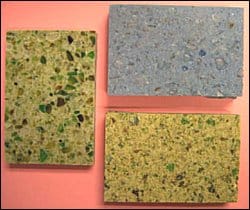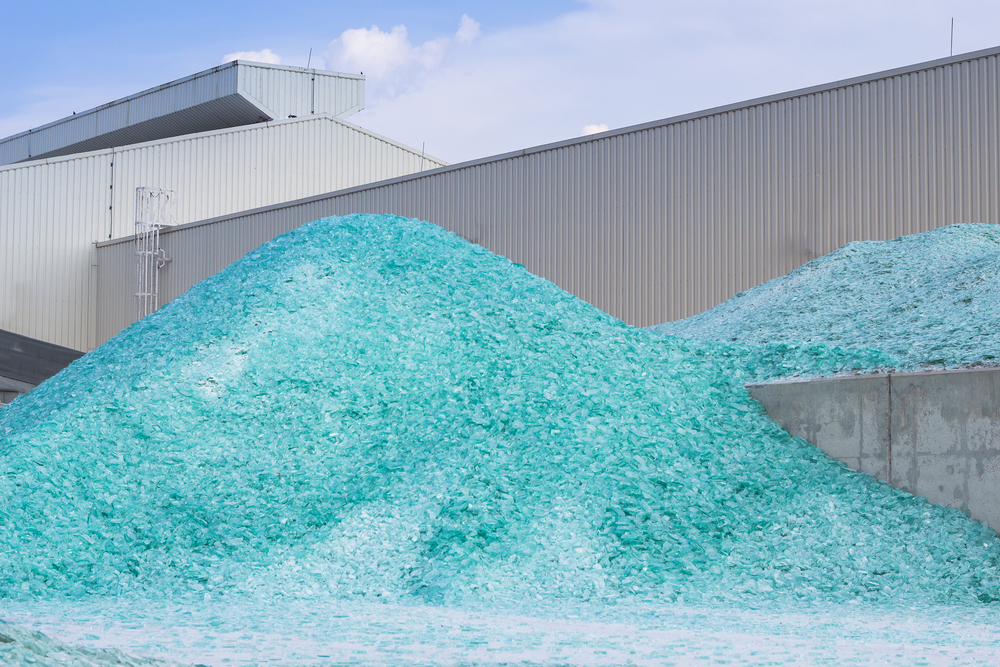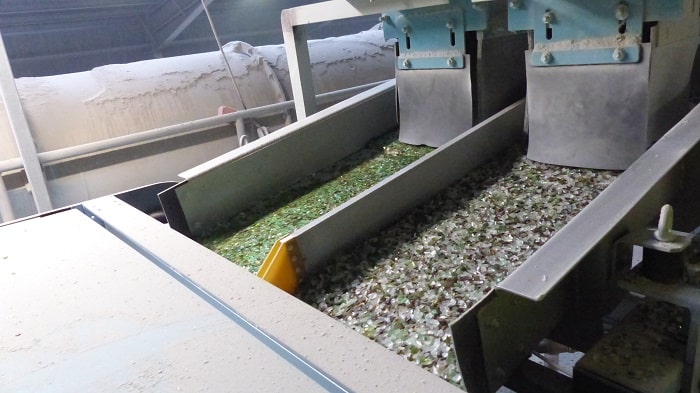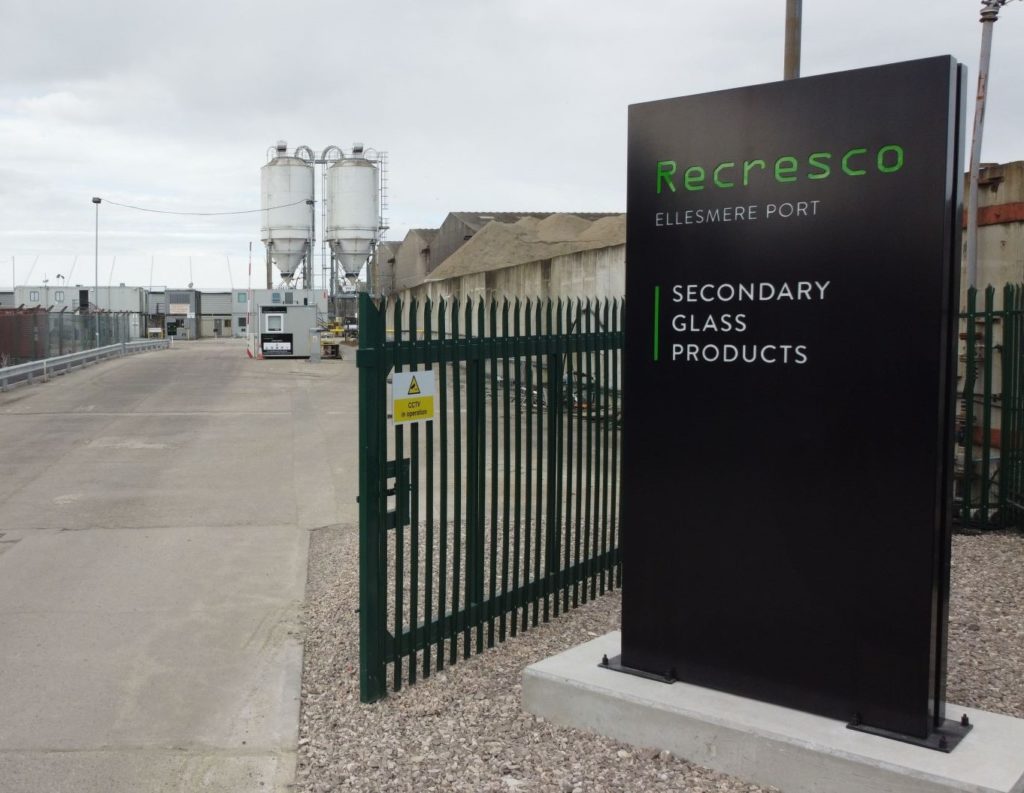The findings come in the second interim report on research being carried out by ICER, the Industry Council for Electronic Equipment Recycling, with support from Glass Technology Services.
The recycling of cathode ray tubes (CRTs) from old televisions and computer monitors will become increasingly important as the UK implements the European Waste Electronic and Electrical Equipment (WEEE) Directive by August this year. This Directive will introduce collection and recycling targets for domestic and commercial waste electronics (see letsrecycle.com legislation section).
 Tiles made from waste glass – one of the possible uses for CRT glass identified by WRAP |
The WRAP report looked into potential markets for and barriers to the recycling of CRT glass. This included glass from television/monitor screens, which does not contain lead, as well as the lead-containing glass from CRT funnels.
The separation of the two types of glass in CRTs – screen glass and funnel (leaded) glass – can be carried out by manually splitting the two CRT components or by shredding whole CRTs before separation, the report said, but there is still some development needed in the UK in this area.
The four potential uses identified for significant volumes of CRT glass were:
- Glass bricks and tiles
- New CRTs
- Use as a fluxing agent in brick and ceramics manufacture
- Use as a fluxing agent in smelting operations.
Commenting on the report, WRAP's material sector manager for Glass, Andy Dawe, said: “The WEEE Directive sets challenging targets for the recycling of CRT glass, and this research will be crucial to identifying cost-effective recycling solutions. Ten percent of the UK's waste CRT glass could be used in the manufacturer of new screens, and there is the potential for this figure to rise to 30% with technological improvements.”
”NEG UK could use a minimum of 6,000 tonnes (of CRT glass) in 2004.“
– Seiichi Tanaka of Nippon Electric Glass
The full research project is due for completion in March 2004. The next step will be for WRAP to put together a business development plan to identify commercial operators to take forward the four “viable” recycling options. The public-private agency will also look into how collections could be set up so that supply can meet demand.
WRAP has already identified one potential user of CRT glass from the UK – Japanese firm Nippon Electric Glass. The company uses recycling technology developed in Japan in 1998 to make new CRTs from waste CRT glass.
Seiichi Tanaka of NEG UK said: “NEG UK would like to use end-of-life CRT glass in its manufacturing process in the UK, but due to current unavailability, we would have to import from within the EU. This poses immediate legislative disadvantages and financial constraints.”
He continued: “It would make better business sense to source the material locally, and if this could be achieved, NEG UK could use a minimum of 6,000 tonnes in 2004.”
For the full report, Materials recovery from waste cathode ray tubes, visit the WRAP website.









Subscribe for free